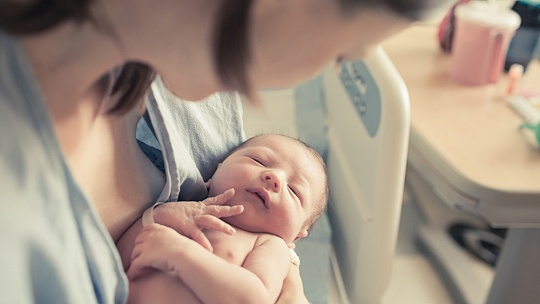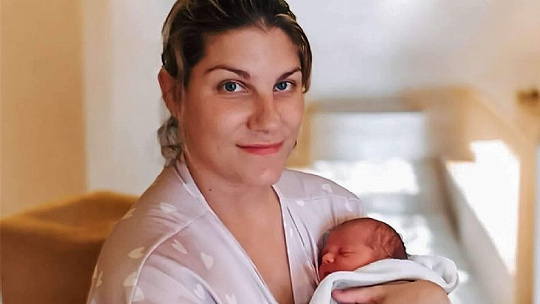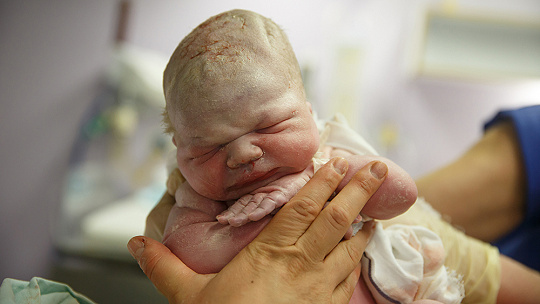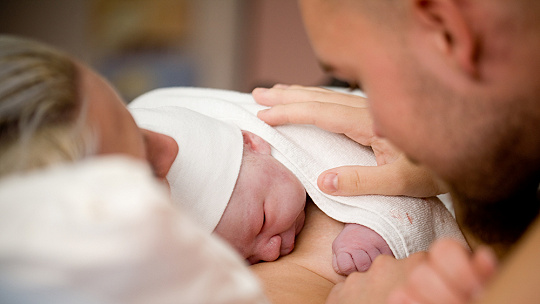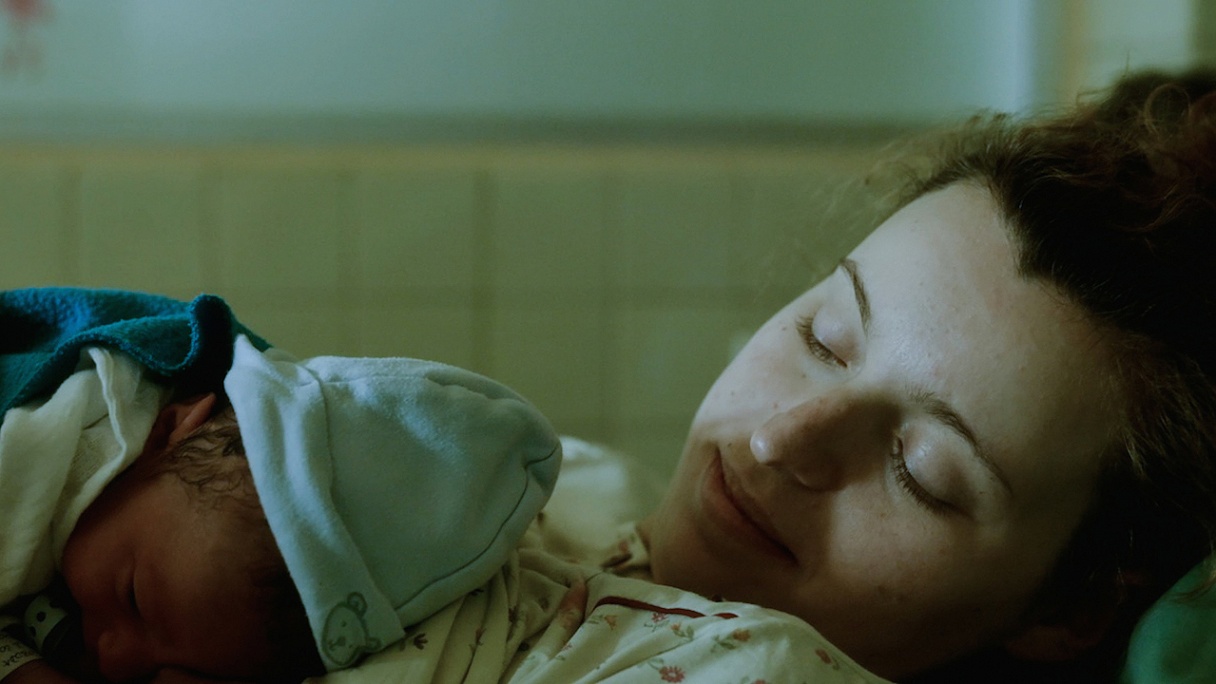
Všetko ako má byť. Aspoň na chvíľu.
Foto: Medzi namiNepochopiteľné. Prečo matka a dieťa nemôžu zostať spolu? Pozrite si ukážku z filmu Medzi nami:
A Child and its Mother Need to be Together after Birth to Fall in Love with Each Other, Psychiatrist Reminds from Selina Becker on Vimeo.
Keby boli prirodzený vaginálny pôrod, bonding a dieťa s matkou v posteli liekom alebo prístrojom, chcela by ho každá pôrodnica. Čo to znamená?
Prirodzený vaginálny pôrod je vrodený program, do ktorého sa zapájajú regulačné mechanizmy organizmu matky. Na tento program sa dá spoľahnúť u väčšiny žien. Jeho nerušený priebeh si vyžaduje pokojné, podporné prostredie a zo strany zdravotníckeho personálu trpezlivosť, empatické sprevádzanie, oporu a profesionalitu. Prítomnosť osoby, s ktorou má rodiaca žena dobrý, bezpečný vzťah, a ktorá má kapacitu na emočné zvládanie náročnej situácie, je zvyčajne nápomocná. Silný stres – napríklad vplyvom nevhodného prostredia alebo zneisťujúcej či zraňujúcej komunikácie – môže narušiť prirodzený priebeh pôrodu. Preto je táto časť „lieku“ dôležitá a je aj prevenciou psychických tráum, po ktorých sa môžu objaviť aj symptómy posttraumatickej stresovej poruchy. Prirodzený vaginálny pôrod navodí u matky stav pozitívnej naladenosti na dieťa a túžbu byť s ním v kontakte. Významnú rolu v tom zohráva hormón oxytocín uvoľňujúci sa v mozgu matky.
Pre matku i narodené dieťa je prirodzené, keď sú hneď po pôrode v kontakte koža na kožu, a to neprerušovane až do prvého nadojčenia. Dieťa sa väčšinou v priebehu hodiny vlastnými silami doplazí k prsnej bradavke. Je pritom vedené svojím čuchom, keďže žľazy okolo bradavky produkujú príslušný feromón. V smerovaní mu pomáha aj pach amniotickej tekutiny (plodovej vody) na rúčkach, preto osušenie dieťaťa po pôrode nie je vhodné, určite nie rúčok. Kontakt koža na kožu, prvé dojčenie, pohľad tvárou v tvár je iniciálnou súčasťou „zamilovanosti“ medzi matkou a dieťaťom. Vplýva na ňu hormón blízkosti − oxytocín, ktorý pôsobí priamo v mozgu dieťaťa aj matky a nastavuje ich na sociálny kontakt, lásku. Proces vytvárania silného vzťahu medzi dieťaťom a matkou sa nazýva bonding.
Podobne, ako je matka vybavená vrodenou dispozíciou k opatrovateľskému správaniu voči svojmu dieťaťu, má aj dieťa už od narodenia v sebe aktívny program na udržiavanie blízkosti. Ak je dieťa pár hodín po pôrode od matky oddelené, separácia môže skomplikovať rozvinutie ich vzťahu a komunikácie. Ak je dieťa v inkubátore, mala by mať matka možnosť hladkať ho. Podľa výskumov už päť minút hladkania a dotykov každú hodinu robí rozdiel vo vývoji dieťaťa a v neskoršej komunikácii medzi matkou a dieťaťom, ktorý sa prejavuje ešte aj po jednom roku. Kontakt koža na kožu je samozrejme rovnako dôležitý aj prípade, že sa dieťa narodilo cisárskym rezom.
Dieťa s matkou v posteli v blízkom telesnom kontakte pôsobí na oboch upokojujúco. Odlúčenie obvykle vyvoláva nepokoj, úzkosť, smútok a u matky zvyšuje pravdepodobnosť vzniku popôrodného blues alebo až depresie.
Prečo sú tieto detaily dôležité?
Láskyplná komunikácia a vzťah medzi dieťaťom a jeho matkou/rodičmi vedú u dieťaťa k vytvoreniu bezpečnej vzťahovej väzby. Tá ho aj v neskoršom živote uschopňuje nadväzovať harmonické medziľudské vzťahy a rozvinúť schopnosť empatie. Vplýva tiež na odolnosť voči stresorom a schopnosť sa po strese zotavovať.
Neistá vzťahová väzba je rizikovým faktorom pre vznik psychických a psychosomatických porúch v neskoršom živote. Takže dobre fungujúce pôrodníctvo a neonatológia významne prispievajú k primárnej prevencii. Preto by mal zdravotnícky personál z oblasti pôrodníctva, neonatológie a psychiatrie ťahať za jeden koniec.
Prof. MUDr. Jozef Hašto, PhD., psychiater a psychoterapeut
Film Medzi nami je dostupný už aj na internete. Pozrieť online aj stiahnuť si ho môžete TU.
Vzdelávacie turné s filmom Medzi nami a expertkami môžete podporiť na StartLabe.
A Child and its Mother Need to be Together after Birth to Fall in Love with Each Other, Psychiatrist Says
How would our babies be born if best practices in medicine were followed? Every day during the International Week for Respecting Childbirth we bring you an excerpt from our documentary Before I Met You, accompanied by expert commentary. Today, psychiatrist and psychotherapist Jozef Hašto writes about how the first moments after childbirth affect the whole life after.If a natural vaginal birth, bonding, and a baby in bed with its mother were a medicament or a medical device, each maternity ward would want them. What does it mean?
Natural vaginal birth is an innate programme that involves regulatory mechanisms of the motherʼs organism. This programme can be relied with most women. Its undisturbed course requires a peaceful, supportive environment and, on the part of the medical staff, patience, empathic assistance, support, and professionalism. The presence of a person—with whom the delivering woman has a good, safe relationship and that has the capacity to emotionally handle the demanding situation—is usually helpful. Strong stress—e.g. due to an inappropriate environment or doubtful or hurtful communication—may interfere with the natural course of birth. Therefore, this portion of the “medicament” is important and it is also the prevention of psychological trauma that may lead to symptoms of post-traumatic stress disorder. Natural vaginal birth tunes the mother into the child and the desire to be in contact with the child. An important role in this is played by the hormone oxytocin that is released in the motherʼs brain.
It is natural for the mother and the child to be in the skin to skin contact immediately after birth, with no interruptions until the first breastfeeding. The baby usually uses the own strength to crawl up to the nipple within one hour. The child follows its sense of smell, as the glands around the nipples produce the corresponding pheromone. Choosing the direction is also aided by the smell of the amniotic fluid on the childʼs hands, so drying the baby after delivery is not appropriate, certainly not drying babyʼs hands. Skin to skin contact, first breastfeeding, and face-to-face look are the initial part of the “falling in love” between the mother and the child. It is affected by the hormone of closeness—oxytocin—that acts directly in the brains of the child and the mother and sets them to social contact, love. The process of creating a strong relationship between the child and the mother is called bonding.
Similar to the mother being equipped with an innate disposition to caring behaviour towards her child, the baby has an active programme of maintaining closeness since birth. If the baby is separated from the mother for a few hours after delivery, the separation may complicate the development of their relationship and communication. If the baby is in an incubator, the mother should have a possibility to caress the child. Research shows that just five minutes of caressing and touching every hour make a difference in the childʼs development and later communication between the mother and the child that is notable even after one year. Skin to skin contact is, of course, equally important even if the baby was born with a Caesarean section.
The baby in bed with the mother in a close physical contact is calming for both of them. Separation usually causes discomfort, anxiety, sadness, and in the mother, it increases the likelihood of postpartum blues or depression.
Why are these details important?
Loving communication and relationship between the child and the mother/parents lead the child to creating a secure attachment. In later life, this attachment makes the child able to establish harmonious interpersonal relations and develop empathy. It also affects the resistance to stressors and the ability to recover from stress.
Insecure attachment is a risk factor for psychological and psychosomatic disorders in later life. Well-functioning obstetrics and neonatology make a significant contribution to primary prevention. That is why medical staff in the field of obstetrics, neonatology, and psychiatry should work together.
Prof. MUDr. Jozef Hašto, PhD., psychiatrist and psychotherapist

